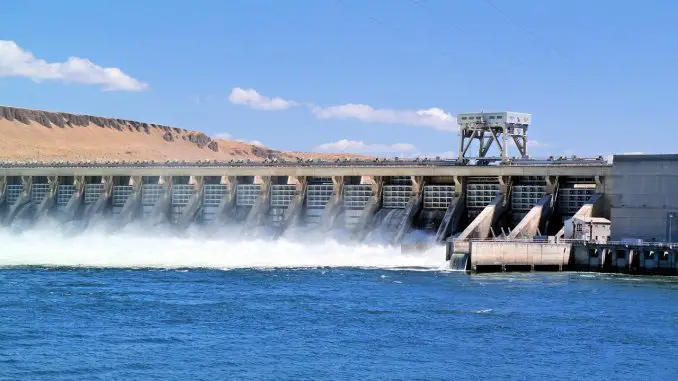
There is tremendous power in water. It is something that man understood even long before we learned how to master electricity. As an energy source, hydropower is very valuable and one of the less environmentally destructive energy alternatives.
What is Hydropower?
The water released from the dammed river drives a turbine that generates electricity.
Hydropower is extracted by flowing water through fixed passages and speeding up one or more water turbines. In order to be able to regulate how much energy is extracted, a dam and a dam wall are created. Water in the dam is bunkered, which is then passed on based on the energy demand that exists.
Thanks to the dams, hydropower is quite unique in its kind. It is extremely difficult to bunker electricity, but the dam can be seen as an energy reservoir where the ability to produce electricity can be stored. As an energy source, hydropower is safe and reliable if the outlet is properly planned. Electricity is generated at an even rate and can be regulated relatively easily by manpower.
The amount of energy that can be generated in a hydroelectric plant depends on the amount of water that is passed through a system and on the fall height the water has at the time of withdrawal.
The water is led in tunnels to generators that are embedded in the dam building. Excess water can leave the dam from the top of the power plant. Sometimes you also see so-called salmon stairs next to the power plant that should allow wildlife to wander up through the watercourse despite being “barred” by a hydroelectric power plant.
New forms of hydropower
Intensive research is ongoing on how a man can extract more of the energy that movements in water can emit. In addition to utilizing watercourses, electricity could be generated by tides, waves, and currents in the sea. Several projects are underway to scale up the methods and seriously compete with other energy types.
Wave power uses floating buoys that move up and down, thus generating energy. Tidal power plants are more like hydropower. With the help of embankments, the water is pressed through the turbines as the water level rises once a day. When the water then withdraws, the turbines are turned and electricity is extracted again. The challenge is to find the right places and construct sufficiently large reservoirs to make tidal power profitable.
Environmental impact of hydropower
Hydropower can in itself be regarded as a pure form of production since no toxic emissions are associated with production. However, the physical impact on nature is quite large in the construction of a hydroelectric power plant, at least the usual type of dam construction.
For starters, the natural flow of water is disturbed. In new construction, it often affects people who hold agriculture below the dam in a very fundamental way. Secondly, the migration of the migratory fish is stopped by the dam and cannot continue. Although salmon stairs are being built, many aquatic animals undergo turbines.
Hydropower also interferes with biodiversity on land. Nature has been adapted to cycles with spring rivers and floods. Most Swedish rivers can today be compared with a number of lakes and in between river flows where the water level varies sharply and unnatural. The ponds are an advantage for some biotopes, but on the whole, Swedish nature has been depleted as a result of hydropower development.
Leave a Reply